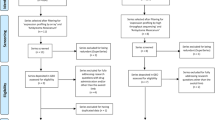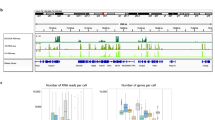Abstract
The goal of our study was the identification of up-regulated genes during axolotl (Ambystoma mexicanum) hindlimb regeneration 4 days after amputation using suppression subtractive hybridization (SSH). Approximately 400 clones that harbored upregulated genes in regenerating blastema tissue were selected for sequence analysis. A BLAST homology search against NCBI non-redundant database and an ambystoma EST database revealed 102 clones that showed homology to known sequences in GenBank with annotated function, 31 were known genes without known function, 74 were novel and 72 belonged to mitochondrial sequences. Differential expression of Hmox1, Orc4L, Pls3, Fen-1, Mcm7 and Mmp3/10a was confirmed using qRT-PCR analysis. Among all genes, only Mmp3/10a has been previously described as involved in limb regeneration. Other important identified genes belong to the group of cell cycle regulators (Orc4L, Nasp, Skp1A and Mcm7, the latter being a possible proliferative marker), those involved in protein synthesis and transport (Sec63, Srp72, Sara2) and V-ATPase pump. The novel genes we identified might be important for the process of blastema formation and the onset of cell proliferation in a regenerating limb.
Resumen
El objetivo del estudio es la identificación de genes sobreexpresados durante la regeneración de las extremidades en el ajolote (Ambystoma mexicanum), cuatro días después de su amputación, mediante hibridación sustractiva supresora (SSH). Aproximadamente 400 clones que contenían genes sobreexpresados en tejido de blastema en regeneración fueron seleccionados para su análisis por secuenciación. Las búsquedas de homología con BLAST en la base de datos no redundante del NCBI y en una base de datos de secuencias de expres’ón (EST) de ajolote revelaron 102 clones que muestran homología con secuencias conocidas y de función definida, 31 que corresponden a secuencias conocidas pero sin función determinada, 74 secuencias son novedosas y 72 corresponden a secuencias mitocondriales. La expresión diferencial de los genes Hmox1, Orc4L, Pls3, Fen-1, Mcm7 y Mmp3/10a fue confirmada mediante análisis por PCR cuantitativa a tiempo real. De todos los genes identificados, solamente Mmp3/10a ha sido anteriormente relacionado con procesos regenerativos de extremidades. Otros genes importantes identificados pertenecen al grupo de reguladores del ciclo celular (Orc4L, Nasp, Skp1A y Mcm7, siendo este último un probable marcador de proliferación), genes involucrados en la síntesis y el transporte de proteínas (Sec63, Srp72, Sara2) y la bomba V-ATPasa. Los genes nuevos identificados podrían ser de importancia en el proceso de formación del blastema y en la iniciación de la proliferación celular de miembros en regeneración.
Similar content being viewed by others
References
Ambystoma EST database (AESTdb) [http:// salamander.uky.edu/ESTdb/].
Adams, D.S., Masi, A. and Levin, M. (2007): H+ pump-dependent changes in membrane voltage are an early mechanism necessary and sufficient to induce Xenopus tail regeneration. Development, 134, 1323–1335.
Adams, D.S., Robinson, K.R., Fukumoto, T., Yuan, S., Albertson, R.C., Yelick, P., Kuo, L., McSweeney, M. and Levin, M. (2006): Early, H+-V-ATPase-dependent proton flux is necessary for consistent left-right patterning of nonmammalian vertebrates. Development, 133, 1657–1671.
Bryant, S.V., Endo, T. and Gardiner, D.M. (2002): Vertebrate limb regeneration and the origin of limb stem cells. Int J Dev Biol, 46, 887–896.
Carlson, M.R., Bryant, S. V. and Gardiner, D.M. (1998): Expression of Msx-2 during development, regeneration, and wound healing in axolotl limbs. J Exp Zool, 282, 715–723.
Christensen, R.N., Weinstein, M. and Tassava, R.A. (2001): Fibroblast growth factors in regenerating limbs of Ambystoma: cloning and semiquantitative RT-PCR expression studies. J Exp Zool, 290, 529–540.
Diatchenko, L., Lau, Y.F., Campbell, A.P., Chenchik, A., Moqadam, F., Huang, B., Lukyanov, S., Lukyanov, K., Gurskaya, N., Sverdlov, E.D. and Siebert, P.D. (1996): Suppression subtractive hybridization: a method for generating differentially regulated or tissue-specific cDNA probes and libraries. Proc Natl Acad SCI USA, 93, 6025–6030.
Diatchenko, L., Lukyanov, S., Lau, Y.F. and Siebert, P.D. (1999): Suppression subtractive hybridization: a versatile method for identifying differentially expressed genes. Methods Enzymol, 303, 349–380.
Endo, T., Bryant, S.V. and Gardiner D.M. (2004): A stepwise model system for limb regeneration. Dev Biol, 270, 135–145.
Ferretti, P. and Géraudie, J. Cellular and molecular basis of regeneratio: from invertebrates to humans. Chichester; New York: Wiley, 1998, p. xx, 458.
Gardiner, D.M., Blumberg, B., Komine, Y. and Bryant, S.V. (1995): Regulation of HoxA expression in developing and regenerating axolotl limbs. Development, 121, 1731–1741.
Gardiner, D.M., Carlson, M.R. and Roy, S. (1999): Towards a functional analysis of limb regeneration. Semin. Cell. Dev. Biol., 10, 385–393.
Gladden, A.B. and Diehl, J.A. (2003): The cyclin D1-dependent kinase associates with the prereplication complex and modulates RB.MCM7 binding. J Biol Chem, 278, 9754–9760.
Guida, T., Salvatore, G., Faviana, P., Giannini, R., Garcia-Rostan, G., Provitera, L., Basolo, F., Fusco, A., Carlomagno, F. and Santoro, M. (2005): Mitogenic effects of the up-regulation of minichromosome maintenance proteins in anaplastic thyroid carcinoma. J Clin Endocrinol Metab, 90, 4703–4709.
Habermann, B., Bebin, A.G., Herklotz, S., Volkmer, M., Eckelt, K., Pehlke, K., Epperlein, H.H., Schackert, H.K., Wiebe, G. and Tanaka, E.M. (2004): An Ambystoma mexicanum EST sequencing project: analysis of 17,352 expressed sequence tags from embryonic and regenerating blastema cDNA libraries. Genome Biol, 5, R67.
Jardim, D.L., da Cunha, A.F., Duarte-Ada, S., dos Santos, C.O., Saad, S.T. and Costa, F.F. (2005): Expression of Sara2 human gene in erythroid progenitors. J Biochem Mol Biol, 38, 328–333.
King, M.W., Nguyen, T., Calley, J., Harty, M.W., Muzinich, M.C., Mescher, A.L., Chalfant, C., N’Cho, M., McLeaster, K., McEntire, J., Stocum, D., Smith, R.C. and Neff, A. W. (2003): Identification of genes expressed during Xenopus laevis limb regeneration by using subtractive hybridization. Dev Dyn, 226, 398–409.
Laskey, R. (2005): The Croonian Lecture 2001 hunting the antisocial cancer cell: MCM proteins and their exploitation. Philos Trans R Soc Lond B Biol Sci, 360, 1119–1132.
Livak, K. J. and Schmittgen, T. D. (2001): Analysis of relative gene expression data using realtime quantitative PCR and the 2(-Delta Delta C(T)). Methods, 25, 402–408.
Miyazaki, K., Uchiyama, K., Imokawa, Y. and Yoshizato, K. (1996): Cloning and characterization of cDNAs for matrix metalloproteinases of regenerating newt limbs. Proc Natl Acad Sci USA, 93, 6819–6824.
Nye, H.L., Cameron, J.A., Chernoff, E. A. and Stocum, D.L. (2003): Regeneration of the urodele limb: a review. Dev Dyn, 226, 280–294.
Page, R.B., Monaghan, J.R., Samuels, A.K., Smith, J.J., Beachy, C. K. and Voss, S. R. (2006): Microarray analysis identifies keratin loci as sensitive biomarkers for thyroid hormone disruption in the salamander Ambystoma mexicanum. Comp Biochem Physiol C Toxicol Pharmacol, 145, 15–27.
Putta, S., Smith, J.J., Walker, J.A., Rondet, M., Weisrock, D.W., Monaghan, J., Samuels, A.K., Kump, K., King, D.C., Maness, N.J., Habermann, B., Tanaka, E., Bryant, S.V., Gardiner, D.M., Parichy, D.M. and Voss, S.R. (2004): From biomedicine to natural history research: EST resources for ambystomatid salamanders. BMC Genomics, 5, 54.
Salvetti, A., Rossi, L., Deri, P. and Batistoni, R. (2000): An MCM2-related gene is expressed in proliferating cells of intact and regenerating planarians. Dev Dyn, 218, 603–614.
Semple, J.W. and Duncker, B.P. (2004): ORC-associated replication factors as biomarkers for cancer. Biotechnol. ADV, 22, 621–631.
Smith, J.J., Putta, S., Walker, J.A., Kump, D.K., Samuels, A.K., Monaghan, J.R., Weisrock, D.W., Staben, C. and Voss, S.R. (2005): Sal-Site: integrating new and existing ambystomatid salamander research and informational resources. BMC Genomics, 6, 181.
Stevens, T.H. and Forgac, M. (1997): Structure, function and regulation of the vacuolar (H+)-ATPase. Annu Rev Cell Dev Biol, 13, 779–808.
Stocum, D.L. (1999): Limb regeneration: reentering the cell cycle. Curr Biol, 9, R644–646.
Su, A.I., Guidotti, L.G., Pezacki, J.P., Chisari, F.V. and Schultz, P.G. (2002). Gene expression during the priming phase of liver regeneration after partial hepatectomy in mice. Proc Natl Acad Sci USA, 99, 11181–11186.
Torok, M.A., Gardiner, D.M., Shubin, N.H. and Bryant, S.V. (1998). Expression of HoxD genes in developing and regenerating axolotl limbs. Dev Biol, 200, 225–233.
Tsonis, P.A. (1996). Limb Regeneration. Cambridge University Press, New York.
Wagener, F.A., van-Beurden, H.E., von-den-Hoff, J.W., Adema, G.J. and Figdor C.G. (2003): The heme-heme oxygenase system: a molecular switch in wound healing. Blood, 102, 521–528.
Wallace, H. (1981). Vertebrate Limb Regeneration. Wiley, New York.
Yang, E.V., Gardiner, D.M., Carlson, M.R., Nugas, C.A. and Bryant, S.V. (1999): Expression of Mmp-9 and related matrix metalloproteinase genes during axolotl limb regeneration. Dev Dyn, 216, 2–9.
Zhang, X., Ding, L. and Sandford, A.J. (2005): Selection of reference genes for gene expression studies in human neutrophils by real-time PCR. BMC Mol Biol, 6, 4.
Author information
Authors and Affiliations
Corresponding author
Rights and permissions
About this article
Cite this article
Gorsic, M., Majdic, G. & Komel, R. Identification of differentially expressed genes in 4-day axolotl limb blastema by suppression subtractive hybridization. J. Physiol. Biochem. 64, 37–50 (2008). https://doi.org/10.1007/BF03168233
Received:
Issue Date:
DOI: https://doi.org/10.1007/BF03168233




